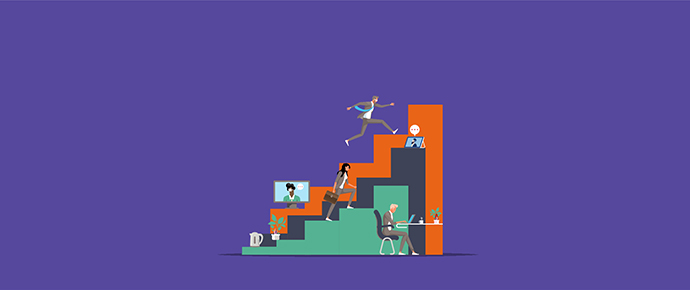Workspace personalisation is key for productivity, says Avison Young

New report examines how workplaces should adapt to meet employee needs.
Avison Young’s new report, Productivity, the workplace and Covid-19, examines which elements of office-based and home-based working influence knowledge worker productivity and investigates the resulting lessons learnt for office design and fit-out in the future.
Daryl Perry, Head of UK Research at Avison Young, comments:
“Boosting productivity is key to the economic recovery and it is crucial for government and business decision-making. We have found that for the knowledge-based service sector, the most reliable metric is employees’ perception of their own productivity. Our research suggests that a high-quality, personalised work environment is vital in achieving this perception of productivity.
With widespread Covid-enforced homeworking, we have a unique opportunity to investigate how different environments we work in affect productivity and what lessons can be drawn from this to cater for employee needs in our offices.”
Employee wants and needs - home versus office
Using an adaptation of Maslow’s hierarchy of needs, Avison Young has examined the role of the workplace across five tiers (physiological needs, need for safety, need for belonging, feeling of accomplishment, self-actualisation), to understand how organisations can better serve the needs of their employees to increase job satisfaction and productivity.
Once the most basic needs are met, in many cases, homeworking can facilitate an increase in perceived productivity. Provided employees have access to appropriate technology and connectivity, the benefits of time saved on commuting, limited distractions and a personalised workspace allow focused working. The majority of respondents claimed that the home is a more supportive environment than the office when engaged in individual, task-based working and reading (90%) or thinking creatively (84%).
Employees also feel more comfortable in an environment they can control. Three core aspects that influence people’s wellbeing are daylight, noise levels and temperature. Homeworking currently enables many individuals to have greater control over these elements.
However, there are essential components that contribute to employees’ wellbeing, satisfaction and productivity that cannot be catered for remotely.
Offices as centres of collaboration and innovation
As offices were forced to close at short notice, many businesses were operating in ‘survival mode’. But as organisations increasingly move out of this phase in the coming months and into one focused on growth and development, we will see greater emphasis placed on teamwork, winning new business, inter-departmental collaboration and innovative thinking.
Offices are indispensable in this aspect, as they provide an opportunity to make new connections, foster existing relationships, learn from others and come together in a collaborative space. When asked about the importance of various functions or physical features of the office, one of the key priorities for employees is a place to meet (75%), providing the opportunity to build new relationships with colleagues and clients that would otherwise be more difficult virtually.
Personalisation is the key driver of the future office
The pandemic has highlighted some important lessons that need to be considered when thinking about the future role of the workplace. Contemporary offices may already offer high quality collaborative spaces that promote innovation and cross-fertilisation of ideas. However, a prevalence of unallocated open plan desks may also provide a disruptive and de-personalised environment and offices need to evolve. The better a particular environment facilitates a degree of personalisation – of light, temperature and acoustics as well as facilities, décor and ambience – the more comfortable and productive employees are likely to be.
Nearly 70% of respondents believed an activity-based environment increased their productivity, and two-thirds felt their work was more stimulating. However, it’s important to provide a range of environments that positively enhance and support employee productivity in distinct ways. For example, extrovert personalities may prefer open-plan spaces, whereas introverted individuals may be less productive in this environment, so a mix of spaces will be required. Offices must also use technology to facilitate workspace personalisation, while making sure that employees are connected to each other and the organisation’s collective intelligence.
Anna Scally, Director in Avison Young’s Workplace, Arts & Culture team, said:
“The office will need to work harder to justify its place in our working lives, and in the cost structure of our companies. We believe that high quality workplaces that optimally meet individual and collective working needs will contribute to creating happier, healthier and more productive organisations.
Design and fit-out will have to focus more explicitly on meeting the varied wants and desires of a wider range of employees and recognise that different personalities have different requirements. Far from being dead, the office is entering one of the most exciting periods ever seen in the evolution of the workplace.”
For more information, and to read the full report, click here.

